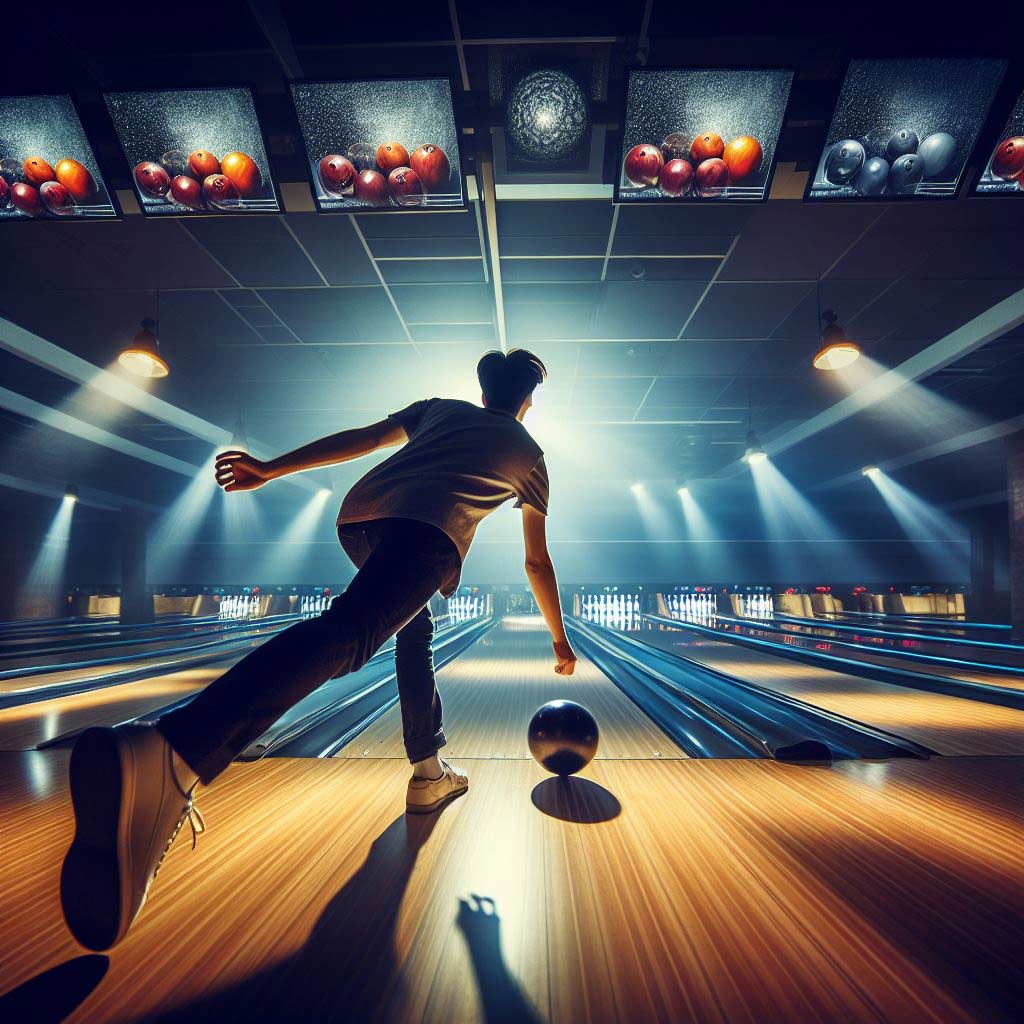Bowling is one of the most popular recreational activities and competitive sports around the world. People of all ages enjoy the fun of rolling balls down lanes and knocking over pins. According to research, over 70 million people go bowling every year in the United States alone.
The sport offers an enjoyable and low-impact form of exercise. It also provides opportunities for camaraderie and friendly competition.
From casual family nights to elite professional tournaments, bowling attracts players across the spectrum.
While some may think bowling depends largely on luck, there are definitive skills and techniques required to be a good player.
With practice and an understanding of bowling fundamentals, anyone can become a skilled bowler and improve their accuracy, power, and consistency on the lanes.
This article will provide 15 helpful tips and strategies for bowlers looking to enhance their abilities. Whether you are a beginner seeking the basics or a seasoned player hoping to advance to the next level, putting these bowling methods into practice can lead to bowling success.
Find the Right Bowling Ball
One of the first steps to becoming a better bowler is using the right bowling ball for your playing style and physical ability.
Getting properly fitted for a ball involves considering key factors like weight, finger hole placement, and drilling layout.
Bowling balls typically range from 6 to 16 pounds. Heavier balls can provide more power but require greater strength to control.
Lighter balls offer more accuracy for slower, less powerful throws. Finger holes should fit your hand size snugly without cramping. Pro shops can measure your hand and drill custom holes for optimal comfort.
The ball’s coverstock material, surface finish, and core shape also impact its motion. Coverstocks like plastic, urethane, and reactive resin have different amounts of tackiness.
A polished surface creates less friction for a straighter slide, while a sanded finish provides more hook potential. Finger-tip grip enhances revolutions for hook shots. Finding the right combinations to suit your bowling form is key.
Perfect Your Stance and Approach
A proper stance sets the foundation for an effective delivery. Stand with your hips and shoulders square to the foul line, knees slightly bent, and weight balanced evenly. Keep your eyes focused on the pins and target downlane throughout your approach.
A four or five-step approach is most common. Start forward with your non-bowling foot, then continue at a comfortable walking pace.
Keep your steps straight without crossing over. Lean your shoulder in the direction the ball will roll. Time the final slide step so you release close to but not past the foul line.
Practice fluidly walking through your approach to build muscle memory. A consistent pre-delivery routine sets you up for the best chance of an accurate throw.
Master Your Release Technique
Releasing the ball with proper form greatly impacts your shots. As you complete your final approach step, bring the ball straight back behind you.
Bend your elbow and keep your wrist firm. Release the ball forward in a straight, pendulum-like path. Avoid twisting your wrist or turning the ball to the side.
Let go of the ball by lifting your thumb out of the hole first, allowing your fingers to exit second. This creates forward rotation for a smooth roll.
Follow through fully with your arm swing towards the pins. This releases energy and leverage stored in your muscles through the swing.
Aim and Target Properly
Locating your starting position and visualizing the ball’s path down the lane is essential to aiming accurately.
Before each throw, visualize the line you want the ball to travel along the lane. Pick out two or three targeting dots as checkpoints along that path.
Position your starting foot about 5 to 15 boards from the center dot, depending on whether you want to throw straight or hook the ball. During your approach, keep your eyes focused down the lane line to your furthest target dot.
Spare shots also require adjusting your starting position and visual path to hit specific pins. Analyze the remaining pins to determine your optimal entry angle.
Build Strength and Control
Physical exercises to strengthen your arm, wrist, fingers, and core muscles give you greater command of the bowling ball. For arm strength, perform overhead presses and lateral raises using weights like dumbbells or resistance bands.
Wrist curls and reverse wrist curls with light hand weights build wrist stability. Finger and grip exercises like squeezing tennis balls also improve fingertip control. Core exercises develop the body’s stability and balance.
Analyze Your Throw and Make Adjustments
Evaluating each throw to identify corrections is key to improvement. Pay attention to where your ball impacts the pins – are you consistently missing your mark left or right? Too fast or slow? Curving more or less than expected?
Make incremental changes to your starting position, approach pace, release timing and follow-through based on those observations.
If the ball hooks early, try moving your feet right and aiming further left. If the curve is too sharp, lower the height of your backswing. Tweaking your technique through self-analysis helps hit your targets.
Practice Often to Develop Consistency
Dedicated practice time is essential for honing your skills. Try to bowl at least twice a week, whether at open bowling sessions or scheduled league nights. Vary your practice to focus on different aspects of your game.
Spend some frames working on picking up difficult spare shots. Bowl an entire game aiming for high consistency rather than high scores.
Do a session throwing only straight shots using a plastic ball. Focused, mindful practice with purpose beats casual bowling more times per week.
Record and Analyze Your Stats
Recording key stats during practice and league play provides measurable indicators of your progress. Note your total pinfall score, frames with strikes/spares, types of pins left, and causes of misses. Dedicated bowling scoring apps track your rolling average and handicap.
Analyze these stats over time to identify strengths like high spare conversion and weaknesses like consistently leaving 10 pins.
The data will reveal the specific areas of your game to focus practice on. Virtual pro shops even let you submit videos of throws for coaches to assess and provide tips.
Learn the Oil Patterns
Understanding the oil conditions on a lane helps predict how your ball will move. For recreational bowling, oil is applied in a wider pattern from the side walls to around the center dots. This allows more room for error with straight shots.
Sport patterns have oil concentrated more in the middle with less to the sides. This makes curving shots into the pocket essential.
Adjust your starting position and visual target lines based on if oil is spread evenly or tapered outside. Be willing to change angles when you transition from practice to competition patterns.
Stay Relaxed While Bowling
Maintaining a relaxed state of mind and body enables your best performance. Don’t over-muscle or forcefully heave the ball.
Keep breathing throughout your approach and release. Simply use proper techniques and gravity to let the weight of the ball do the work.
Playing upbeat music and visualizing positive shots keeps your vibe calm and confident. Take time between throws to refocus, shake off tension, and start afresh. Having an optimistic mindset and not fixating on misses or gutter balls is key to consistency.
Visualize Success Before Throwing
Mental visualization of your desired result before each throw can help achieve it physically. As you step up to bowl, picture yourself flawlessly executing the motions. See the precise trajectory and pin action in your mind’s eye.
Imagine the sound of a powerful strike impact. Build this image positively through a first-person perspective. Reinforce feelings of capability and calm control. This boosts confidence you can translate into your actual throw.
Compete in Games to Apply Skills
Practicing your techniques in a variety of competitive games is a fun way to hone your skills. Sign up for a weekly league night to get matched against other players with similar averages. Pick up spares and utilize strategies to win points.
Organize or join a friendly bowling tournament. Go head-to-head against friends and family in creative games like 3-6-9, lowball, or Scotch doubles. Challenge yourself by competing in sports shot patterns. Games incentivize implementing your abilities.
Invest in Your Equipment
Having bowling gear personalized for you eliminates variables of using alley house balls. Your custom ball’s weight, holes, and specifications remain perfectly consistent from session to session. Invest in supportive bowling shoes with slide soles on one foot and traction on the other.
Stash a couple of fingertip towels in your bag to keep your ball’s surface clean between throws. Store equipment properly at home to prevent damage. Your gear gives you ownership over the entire game.
Identify and Correct Common Mistakes
Being aware of the most frequent technical errors can help you proactively avoid and fix them in your own game.
Grip mistakes like inserting fingers incorrectly or squeezing the ball often lead to hooking issues. Inconsistent timing and rushed approaches reduce accuracy.
Releasing off-center causes a sideways roll. Poor posture leads to imbalance and reduced power. Targeting inconsistently results in misses left and right.
Identifying your personal trouble spots and making incremental corrections is the pathway to improvement.
Study the Techniques of Professional Bowlers
Observing elite players in tournaments and instructional videos provides an excellent education by example. Notice their form, power, release, and strategy in action. Break down their approaches frame-by-frame.
See how pros analyze lane conditions and adjust. Take notes on their best practices to integrate into your own game.
Joining a clinic conducted by a professional bowler also offers the chance to gain personalized expert tips and hands-on advice.
Conclusion
Becoming an accomplished bowler requires understanding the fundamentals of the game and dedicating time to purposeful practice.
Finding a properly fitted ball and mastering an efficient stance, approach, release, and follow-through establishes the foundation for success.
Analyzing your throws to continually refine technique is key, along with exercising to build bowling muscles.
Maintaining focus on targets, visualizing the desired result, and staying relaxed also enable you to showcase skills during the competition.
By applying these essential tips and best practices, any bowler can experience the satisfaction of knocking down pins more consistently and advancing to the next performance level.
With the right motivation and mix of patience, persistence, and practice, you can become the star player you envision. So grab your ball, lace up your bowling shoes, and get ready to roll strikes on the lanes!
Frequently Asked Questions
How can I become a better bowler?
To become a better bowler, get properly fitted equipment, learn proper stance and release techniques, practice spare shooting, and record stats to identify weaknesses. Focusing on mechanics, adjusting speed and curve, and targeting are key. Competing in leagues and games also improves skills.
How can I improve my bowling aim?
Improve bowling aim by visualizing the path of the ball to the pins before throwing. Pick targets on the lane to guide your ball’s trajectory. Adjust your starting position and approach angle depending on whether you want to throw straight or hook. Analyze where the ball impacts the pins to make corrections.
How do you win bowling easily?
Consistently throwing strikes is the easiest way to win at bowling. Hitting the pocket by accurately aiming and adjusting speed and curve to your advantage increases strikes. Capitalizing on spare opportunities also builds score. Knowing oil patterns helps adjust your throw. Staying relaxed and confident makes winning easier.
Can you be naturally good at bowling?
Some people have a natural talent and coordination that provides an advantage in bowling. However, anyone can become a good bowler through proper technique, targeted practice, and experience. Fitness, focus, adjustment, and good equipment may matter more than innate ability alone.
Should I look at the pins or arrows in bowling?
Focus on the arrows when aiming as they help guide your ball to the pocket. Briefly glance at the pins to visualize your target, but concentrate on following your ball over the arrows at the halfway point down the lane. The arrows indicate if you released too straight or sharply angled.
How to get 300 in bowling?
Shooting 300 requires throwing 12 consecutive strikes in one game. Accuracy with both pocket hits and proper speed to carry all pins is key. Consistent technique, adjustments based on lane oil patterns, confidence under pressure, and some luck are also required to bowl a perfect 300 game.
What is 11 strikes in a row called?
In bowling, throwing 11 strikes in a row is called a “hot hand”. It means a player is in the groove with their shots. 12 strikes in a row is a perfect 300 game. Between strikes, picking up spares also keeps a hot hand alive.
How do you throw a bowling ball like a pro?
Master proper stance, straight backswing, pendulum release, and follow through. Lead with your thumb exiting the ball first. Visualize the ball path and focus on targets. Match ball speed to lane oil patterns. Remain relaxed and confident for fluid, powerful professional throws.
How do I stop falling away when bowling?
To stop falling away during your approach, keep your shoulders square through release, slide straight rather than opening your hips, and follow fully through your swing. This keeps momentum driving towards the pins. Proper balance and strength in the legs and core also prevent falling away.





